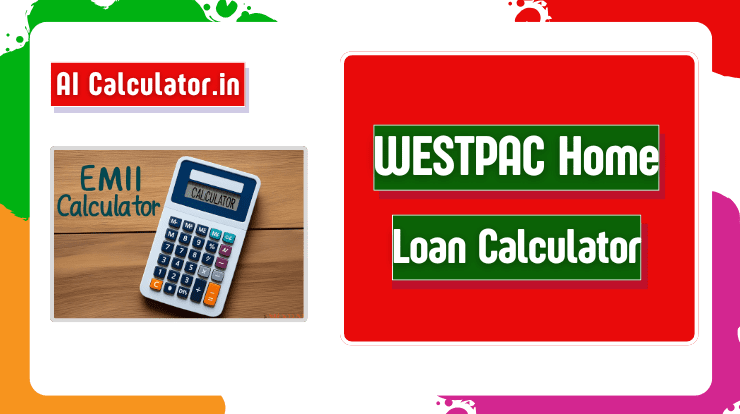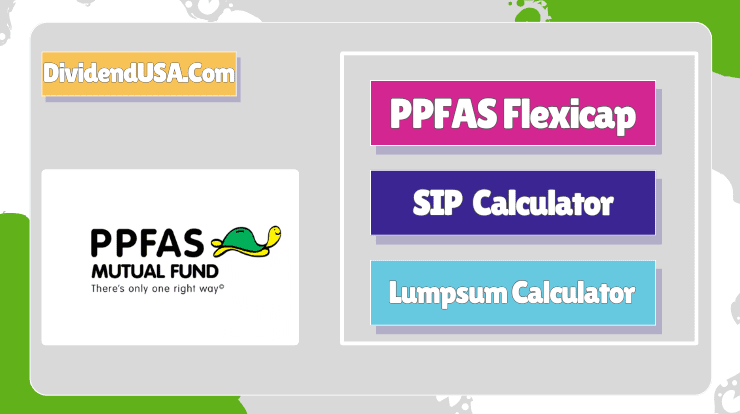Join WhatsApp Group
Join NowIllinois EBT Calculator
Estimate your SNAP (food stamp) benefits in Illinois. This calculator uses current Illinois Department of Human Services guidelines to provide an estimate of your monthly benefits.
SNAP helps eligible low-income individuals and families buy groceries at participating stores throughout Illinois.
Illinois SNAP Information
Income Limits (130% of Federal Poverty Level):
- 1 person: $1,580/month
- 2 people: $2,137/month
- 3 people: $2,694/month
- 4 people: $3,250/month
- Each additional person: +$557/month
Asset Limits:
- General households: $2,750
- Households with elderly/disabled: $4,250
- Primary home and one vehicle per adult are typically excluded
To Apply: Visit your local Illinois DHS office or apply online at abe.illinois.gov
Emergency SNAP: If you need food assistance immediately, you may qualify for emergency SNAP benefits within 7 days.
Figuring out whether you qualify for SNAP benefits and estimating your monthly food assistance can feel overwhelming. That’s where an Illinois EBT calculator becomes invaluable. This comprehensive guide walks you through everything you need to know about calculating your potential SNAP benefits, understanding eligibility requirements, and maximizing your food assistance in Illinois.
Table of Contents
What are Illinois EBT and SNAP?
The Supplemental Nutrition Assistance Program (SNAP) (formerly Food Stamps) helps low-income people and families buy the food they need for good health. Benefits are provided on the Illinois Link Card – an electronic card that is accepted at most grocery stores. The program is managed by the Food and Nutrition Service (FNS) of the United States Department of Agriculture. The Department of Human Services administers the program in Illinois.
EBT stands for Electronic Benefits Transfer, which is simply the system used to deliver SNAP benefits. Your Illinois Link Card works like a debit card, allowing you to purchase eligible food items at thousands of participating retailers across the state.
An Illinois SNAP calculator helps you estimate your monthly benefits before applying, giving you a clear picture of the food assistance you might receive. This estimation tool considers your household size, income, expenses, and various deductions to provide a realistic benefit amount.
Who is Eligible for SNAP in Illinois?
SNAP eligibility in Illinois depends on several key factors that determine whether you qualify for food assistance. Understanding these requirements helps you use an Illinois food stamp calculator more effectively.
Basic Eligibility Factors
Household Size and Income Limits The guidelines show the highest gross income your household can have in a month and still receive Supplemental Nutrition Assistance Program (SNAP) benefits. Gross income is your total monthly income from all sources before any deductions.
For the period October 2024 through September 2025, Illinois SNAP income limits are:
| Household Size | Gross Monthly Income Limit | Net Monthly Income Limit |
|---|---|---|
| 1 person | $2,510 | $1,932 |
| 2 people | $3,407 | $2,622 |
| 3 people | $4,303 | $3,312 |
| 4 people | $5,200 | $4,002 |
| 5 people | $6,097 | $4,692 |
| 6 people | $6,993 | $5,382 |
| 7 people | $7,890 | $6,072 |
| 8 people | $8,787 | $6,762 |
Asset Limits Currently, households may have $3,000 in countable resources (such as cash or money in a bank account) or $4,500 in countable resources if at least one member of the household is age 60 or older, or is disabled.
Work Requirements Most able-bodied adults aged 18-49 without dependents must work or participate in job training for at least 20 hours per week to maintain SNAP benefits beyond three months in a three-year period.
Citizenship and Residency You must be a U.S. citizen or qualified non-citizen and live in Illinois to receive benefits.
How an Illinois EBT Calculator Works
Understanding how an Illinois EBT benefit estimate tool functions helps you get accurate results when planning your food budget.
Inputs the Calculator Needs
A comprehensive Illinois SNAP calculator requires several pieces of information to provide accurate estimates:
Income Information:
- Gross monthly income (before taxes and deductions)
- Net monthly income (after taxes and deductions)
- Earned income from employment
- Unearned income (Social Security, unemployment, child support received)
- Self-employment income (minus allowable business expenses)
Household Details:
- Total number of people in your SNAP household
- Ages of household members
- Disability status of any members
- Student status
Monthly Expenses:
- Rent or mortgage payments
- Utilities (heating, cooling, electric, phone)
- Medical expenses for elderly or disabled members
- Dependent care costs for work or education
- Child support payments made to someone outside the household
Outputs Users Get
After processing your information, an Illinois SNAP calculator provides:
- Estimated Monthly Benefit Amount – Your projected monthly SNAP allotment
- Benefit Per Person – Average benefit divided by household size
- Eligibility Status – Whether you likely qualify for benefits
- Calculation Breakdown – Step-by-step explanation of how benefits were determined
- Effective Benefit Rate – Percentage of maximum benefit you might receive
Illinois SNAP Calculation Method — Step by Step
Benefits are calculated by multiplying net monthly income by 0.3 and subtracting the result from the maximum allotment for the household size. Households with no net income receive the maximum benefit.
Here’s exactly how Illinois SNAP benefits calculation works:
Step 1: Gross Income Test
Your household’s gross monthly income must be at or below 130% of the Federal Poverty Level (with exceptions for elderly/disabled households).
Step 2: Calculate Allowable Deductions
A standard deduction of $204 for household sizes of 1 to 3 people (higher for some larger households and different for households in Alaska, Hawaii, the U.S. Virgin Islands, and Guam). A dependent care deduction when needed for work, training, or education. Medical expenses for elderly or disabled members.
Standard Deductions for Illinois (2024-2025):
- Households 1-3 people: $204
- Households 4 people: $204
- Households 5+ people: $240
Other Deductions:
- 20% of earned income
- Dependent care costs (up to $215/child under 2, $175/child 2 or older)
- Medical expenses over $35/month for elderly/disabled members
- Excess shelter costs over 50% of adjusted income
Step 3: Net Income Test
After deductions, your net income must be at or below 100% of the Federal Poverty Level.
Step 4: Benefit Calculation Formula
Maximum Benefit - (Net Income × 0.30) = Monthly SNAP BenefitStep 5: Minimum Benefit Rule
A 1-person household can receive up to $292 per month in 2025. Households with very low benefits may receive a minimum amount or no benefits at all.
Example Calculations
Let’s walk through real-world scenarios to show how to calculate SNAP benefits in Illinois style.
Example 1: Single Adult with Low Income
Maria’s Situation:
- 1-person household
- Gross monthly income: $1,200 (part-time work)
- Rent: $600/month
- Utilities: $80/month
- No medical expenses or other deductions
Step-by-Step Calculation:
- Gross Income Test: $1,200 < $2,510 ✓ (Passes)
- Calculate Deductions:
- Standard deduction: $204
- 20% earned income: $1,200 × 0.20 = $240
- Shelter costs: $600 + $80 = $680
- Adjusted income: $1,200 – $204 – $240 = $756
- Excess shelter: $680 – ($756 × 0.50) = $680 – $378 = $302
- Total deductions: $204 + $240 + $302 = $746
- Net Income: $1,200 – $746 = $454
- Net Income Test: $454 < $1,932 ✓ (Passes)
- Benefit Calculation: $292 – ($454 × 0.30) = $292 – $136 = $156/month
Example 2: Family of Four with Mixed Income
The Johnson Family:
- 4-person household (2 adults, 2 children)
- Gross monthly income: $3,800
- Rent: $1,200/month
- Utilities: $150/month
- Childcare: $400/month
- Medical expenses: $0
Step-by-Step Calculation:
- Gross Income Test: $3,800 < $5,200 ✓ (Passes)
- Calculate Deductions:
- Standard deduction: $204
- 20% earned income: $3,800 × 0.20 = $760
- Childcare deduction: $400
- Shelter costs: $1,200 + $150 = $1,350
- Adjusted income: $3,800 – $204 – $760 – $400 = $2,436
- Excess shelter: $1,350 – ($2,436 × 0.50) = $1,350 – $1,218 = $132
- Total deductions: $204 + $760 + $400 + $132 = $1,496
- Net Income: $3,800 – $1,496 = $2,304
- Net Income Test: $2,304 < $4,002 ✓ (Passes)
- Benefit Calculation: $975 – ($2,304 × 0.30) = $975 – $691 = $284/month
How to Use Our Illinois EBT Calculator — Quick Guide
Follow these simple steps to get accurate results from our Illinois SNAP calculator:
- Select Your Household Size – Count everyone who buys and prepares food together
- Enter Gross Monthly Income – Include all income before taxes from all sources
- Add Net Monthly Income – Your take-home pay after taxes and deductions
- Check Elderly/Disabled Status – Mark if anyone is 60+ or disabled
- Click “Advanced Options” to add:
- Monthly housing costs (rent/mortgage)
- Utility expenses
- Medical costs (for elderly/disabled only)
- Childcare expenses
- Total household assets
- Review Your Results – The calculator shows your estimated monthly benefit
- Read the Breakdown – Understand how your benefit was calculated
- Print or Save – Keep your results for reference when applying
Tips to Avoid Errors:
- Use monthly amounts (convert weekly pay by multiplying by 4.3)
- Include ALL household members who eat together
- Don’t forget to include Social Security, unemployment, or child support
- Only count medical expenses for elderly or disabled household members
Common Deductions and How They Affect Benefits
Understanding deductions is crucial for maximising your benefits. Here’s a comprehensive breakdown:
| Deduction Type | Who Qualifies | Maximum Amount | How It Helps |
|---|---|---|---|
| Standard Deduction | All households | $204 (1-4 people)<br>$240 (5+ people) | Automatic reduction from income |
| Earned Income | Working households | 20% of earned income | Reduces countable income significantly |
| Dependent Care | Parents/caregivers | $215/month (under 2)<br>$175/month (2+ years) | Covers childcare for work/school |
| Medical Expenses | Elderly/disabled only | Costs over $35/month | Helps with prescription, medical bills |
| Excess Shelter | All households | Up to $624/month<br>(unlimited for elderly/disabled) | Reduces high housing costs impact |
| Child Support Paid | Paying parents | Full amount paid | Legal child support payments |
Pro Tip: The more qualified deductions you have, the lower your net income becomes, potentially increasing your SNAP benefits.
Tips to Check and Maximise Your Benefits
Getting the most from your SNAP benefits requires strategic planning and accurate reporting:
Before Applying:
- Gather all required documents (pay stubs, rent receipts, utility bills)
- Calculate your average monthly income over the past few months
- List all household members accurately
- Document any medical expenses for elderly or disabled members
Maximising Your Benefits:
- Report all allowable deductions
- Keep receipts for childcare and medical expenses
- Apply for utility assistance programs to reduce shelter costs
- Consider timing your application if income varies seasonally
After Approval:
- Report income changes within 10 days
- Recertify on time to avoid benefit interruptions
- Use benefits wisely by shopping sales and using coupons
- Apply for other programs like WIC, Medicaid, or LIHEAP
Common Mistakes to Avoid:
- Forgetting to include household members
- Underestimating allowable deductions
- Not reporting income changes promptly
- Missing recertification deadlines
Where to Apply and Verify Benefits in Illinois
Ready to apply for SNAP benefits? Here’s exactly where and how to get started:
Online Application:
- Visit the Illinois Department of Human Services website
- Use the ABE (Application for Benefits Eligibility) online portal
- Complete your application 24/7 from home
In-Person Application:
- Visit your local Family Community Resource Centre
- Bring the required documents and identification
- Speak with a caseworker for personalised assistance
Phone Application:
- Call the Illinois DHS Customer Service line
- Request an application be mailed to you
- Get help with questions about the process
Required Documents:
- Photo identification for all household members
- Social Security cards
- Proof of income (pay stubs, benefit letters)
- Rent receipts or mortgage statements
- Utility bills
- Medical expense receipts (if applicable)
Processing Time: Emergency benefits may be approved within 7 days; regular processing takes up to 30 days.
For official Illinois SNAP information and applications, visit the Illinois Department of Human Services SNAP page and the USDA SNAP eligibility guidelines.
Frequently Asked Questions (FAQ)
Can I get SNAP if I work part-time?
Yes! Working part-time doesn’t automatically disqualify you from SNAP benefits. In fact, having earned income can work in your favor due to the 20% earned income deduction. Many working families in Illinois receive SNAP to supplement their food budget.
Do college students qualify for SNAP benefits Illinois?
College students face special SNAP eligibility rules. You may qualify if you:
- Work at least 20 hours per week
- Care for a child under 6
- Participate in work-study programs
- Receive TANF benefits
- Are enrolled in certain training programs
How often do SNAP benefits update?
Starting October 1, 2024, SNAP updates include new income eligibility limits, maximum benefit amounts, and other changes that may impact your benefits for the Oct 2024 – Sept 2025 year. Benefit amounts and income limits are typically updated annually in October.
How do I report a change in my Illinois SNAP case?
Report changes within 10 days by:
- Calling your local Family Community Resource Center
- Logging into your ABE account online
- Visiting your caseworker in person
- Submitting changes through the Illinois DHS mobile app
What happens if I don’t qualify for regular SNAP?
If your income is too high for regular SNAP, you might still qualify for:
- Emergency SNAP (if you meet certain criteria)
- Transitional benefits (if losing other assistance)
- WIC program (for pregnant women, infants, and children)
- Food pantries and community assistance programs
Can I use Illinois EBT in other states?
Yes, your Illinois Link Card works in all 50 states at participating retailers. SNAP benefits are federally funded, making them portable across state lines.
Conclusion
An Illinois EBT calculator is an invaluable tool for understanding your potential SNAP benefits before applying. By entering your household information, income, and expenses, you can get a realistic estimate of your monthly food assistance.
Remember that benefit calculations involve multiple factors including household size, income levels, and various deductions. The examples and step-by-step process outlined in this guide show exactly how to calculate SNAP benefits Illinois provides to eligible households.
While calculator results give you a solid estimate, your actual benefits may vary based on official verification of your circumstances. A 2.5% cost-of-living adjustment (COLA) has been applied for 2025 to account for rising food costs.
The most important step is applying if you think you might qualify. SNAP benefits can significantly help stretch your food budget, and many working families in Illinois successfully receive assistance while maintaining employment.
Use our Illinois SNAP calculator above to get your personalized estimate, then take the next step by applying through the Illinois Department of Human Services. With proper planning and accurate information, you can navigate the application process confidently and access the food assistance your household needs.
Last updated: September 2025 with current Illinois SNAP guidelines and benefit amounts.



